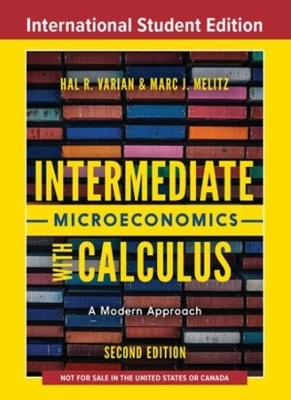
Fundamentals of Differential Equations bound with IDE CD (Saleable Package)
Pearson
978-0-321-61315-8 (ISBN)
- Titel erscheint in neuer Auflage
- Artikel merken
Fundamentals of Differential Equations presents the basic theory of differential equations and offers a variety of modern applications in science and engineering. Available in two versions, these flexible texts offer the instructor many choices in syllabus design, course emphasis (theory, methodology, applications, and numerical methods), and in using commercially available computer software.
Fundamentals of Differential Equations, Seventh Edition is suitable for a one-semester sophomore- or junior-level course. Fundamentals of Differential Equations with Boundary Value Problems, Fifth Edition, contains enough material for a two-semester course that covers and builds on boundary value problems. The Boundary Value Problems version consists of the main text plus three additional chapters (Eigenvalue Problems and Sturm-Liouville Equations; Stability of Autonomous Systems; and Existence and Uniqueness Theory).
1. Introduction
Background
Solutions and Initial Value Problems
Direction Fields
The Approximation Method of Euler
Chapter Summary
Technical Writing Exercises
Group Projects for Chapter 1
A. Taylor Series Method
B. Picard's Method
C. Magnetic Dipole
D. The Phase Line
2. First-Order Differential Equations
Introduction: Motion of a Falling Body
Separable Equations
Linear Equations
Exact Equations
Special Integrating Factors
Substitutions and Transformations
Chapter Summary
Technical Writing Exercises
Group Projects for Chapter 2
A. Differential Equations in Clinical Medicine
B. Torricelli's Law of Fluid Flow
C. The Snowplow Problem
D. Two Snowplows
E. Clairaut Equations and Singular Solutions
F. Multiple Solutions of a First-Order Initial Value Problem
G. Designing a Solar Collector
H. Asymptotic Behavior of Solutions to Linear Equations
I. Utility Functions and Risk Aversion
3. Mathematical Models and Numerical Methods Involving First Order Equations
Mathematical Modeling
Compartmental Analysis
Heating and Cooling of Buildings
Newtonian Mechanics
Electrical Circuits
Improved Euler's Method
Higher-Order Numerical Methods: Taylor and Runge-Kutta
Chapter Summary
Technical Writing Exercises
Group Projects for Chapter 3
A. Dynamics of HIV Infection
B. Aquaculture
C. Curve of Pursuit
D. Aircraft Guidance in a Crosswind
E. Feedback and the Op Amp
F. Bang-Bang Controls
G. Market Equilibrium: Stability and Time Paths
H. Stability of Numerical Methods
I. Period Doubling and Chaos
4. Linear Second-Order Equations
Introduction: The Mass-Spring Oscillator
Homogeneous Linear Equations; The General Solution
Auxiliary Equations with Complex Roots
Nonhomogeneous Equations: The Method of Undetermined Coefficients
The Superposition Principle and Undetermined Coefficients Revisited
Variation of Parameters
Variable-Coefficient Equations
Qualitative Considerations for Variable-Coefficient and Nonlinear Equations
A Closer Look at Free Mechanical Vibrations
A Closer Look at Forced Mechanical Vibrations
Chapter Summary
Technical Writing Exercises
Group Projects for Chapter 4
A. Nonlinear Equations Solvable by First-Order Techniques
B. Apollo Reentry
C. Simple Pendulum
D. Linearization of Nonlinear Problems
E. Convolution Method
F. Undetermined Coefficients Using Complex Arithmetic
G. An Alternative to the Method of Undetermined Coefficients
H. Asymptotic Behavior of Solutions
5. Introduction to Systems and Phase Plane Analysis
Interconnected Fluid Tanks
Elimination Method for Systems with Constant Coefficients
Solving Systems and Higher-Order Equations Numerically
Introduction to the Phase Plane
Applications to Biomathematics: Epidemic and Tumor Growth Models
Coupled Mass-Spring Systems
Electrical Systems
Dynamical Systems, Poincaré Maps, and Chaos
Chapter Summary
Technical Writing Exercises
Group Projects for Chapter 5
A. Designing a Landing System for Interplanetary Travel
B. Things That Bob
C. Hamiltonian Systems
D. Strange Behavior of Competing Species - Part 1
E. Cleaning Up the Great Lakes
6. Theory of Higher-Order Linear Differential Equations
Basic Theory of Linear Differential Equations
Homogeneous Linear Equations with Constant Coefficients
Undetermined Coefficients and the Annihilator Method
Method of Variation of Parameters
Chapter Summary
Technical Writing Exercises
Group Projects for Chapter 6
A. Computer Algebra Systems and Exponential Shift
B. Justifying the Method of Undetermined Coefficients
C. Transverse Vibrations of a Beam
7. Laplace Transforms
Introduction: A Mixing Problem
Definition of the Laplace Transform
Properties of the Laplace Transform
Inverse Laplace Transform
Solving Initial Value Problems
Transforms of Discontinuous and Periodic Functions
Convolution
Impulses and the Dirac Delta Function
Solving Linear Systems with Laplace Transforms
Chapter Summary
Technical Writing Exercises
Group Projects for Chapter 7
A. Duhamel's Formulas
B. Frequency Response Modeling
C. Determining System Parameters
8. Series Solutions of Differential Equations
Introduction: The Taylor Polynomial Approximation
Power Series and Analytic Functions
Power Series Solutions to Linear Differential Equations
Equations with Analytic Coefficients
Cauchy-Euler (Equidimensional) Equations
Method of Frobenius
Finding a Second Linearly Independent Solution
Special Functions.
Chapter Summary
Technical Writing Exercises
Group Projects for Chapter 8
A. Spherically Symmetric Solutions to Shrodinger's Equation for the Hydrogen Atom
B. Airy's Equation
C. Buckling of a Tower
D. Aging Spring and Bessel Functions
9. Matrix Methods for Linear Systems
Introduction
Review 1: Linear Algebraic Equations
Review 2: Matrices and Vectors
Linear Systems in Normal Form
Homogeneous Linear Systems with Constant Coefficients
Complex Eigenvalues
Nonhomogeneous Linear Systems
The Matrix Exponential Function
Chapter Summary
Technical Writing Exercises
Group Projects for Chapter 9
A. Uncoupling Normal Systems
B. Matrix Laplace Transform Method
C. Undamped Second-Order Systems
D. Strange Behavior of Competing Species - Part II
Appendices
A. Newton's Method
B. Simpson's Rule
C. Cramer's Rule
D. Method of Least Squares
E. Runge-Kutta Precedure for n Equations
Answers to Odd-Numbered Problems
Index
| Erscheint lt. Verlag | 15.4.2010 |
|---|---|
| Sprache | englisch |
| Maße | 228 x 205 mm |
| Gewicht | 1306 g |
| Themenwelt | Mathematik / Informatik ► Mathematik ► Analysis |
| ISBN-10 | 0-321-61315-5 / 0321613155 |
| ISBN-13 | 978-0-321-61315-8 / 9780321613158 |
| Zustand | Neuware |
| Haben Sie eine Frage zum Produkt? |
aus dem Bereich



